Spotted wing drosophila
EXOTIC PEST – not wanted in Australia
Spotted wing drosophila (Drosophila suzukii) poses a serious threat to soft-skinned summer fruits including berries, stone fruit, wine and table grapes.
Keeping spotted wing drosophila out of the country is a national priority.
Have you seen this pest?
- Adults are 2-4 mm long (Figure 1).
- Only males have a distinctive dark spot on the tips of their wings (Figure 1).
- Female adults lay eggs into thin-skinned fruit, leaving pin prick sized holes and scars which expose the fruit to attack from pathogens.
- Larvae hatch and feed in fruit, causing soft spots, wrinkling and fruit collapse.

What should I do?
Report immediately.
- Share your photos with us using the Online public reporting form OR
- Call the Exotic Plant Pest Hotline 1800 084 881.
- Please take good quality photos of the pest and/or damage to include in your report. For tips see the How to take good quality photos for a report guide.
Why is it a pest of concern?
Spotted wing drosophila is a highly invasive fruit fly which breeds rapidly and has an ability to survive in warm and cool climates.
Overseas it is a major horticultural pest of thin-skinned fruit including berries, stone fruit and grapes.
Females pierce the skin of the fruit when laying eggs causing fruit damage and rendering the fruit unmarketable.
Larvae can hide undetected inside fruit while it is transported long distances to market.
Where to look
- Spotted wing drosophila feed on mostly thin-skinned ripening fruit (Figure 2).
- Visible holes and scars the size of pin pricks are created by females laying eggs under the surface of ripe or ripening fruit (Figure 3).
- Hatched larvae feed on the fruit pulp inside the fruit until they mature into a pupa (Figure 4).
- Pupae can sometimes be visible punching through the skin (Figure 5).
- The larvae feeding and growing inside the fruit leads to wrinkling and softening of the fruit and collapse of the fruit structure (Figure 6).
- The wounds cause other pathogens such as fungi, bacteria and moulds to enter and infect the fruit (Figure 7).
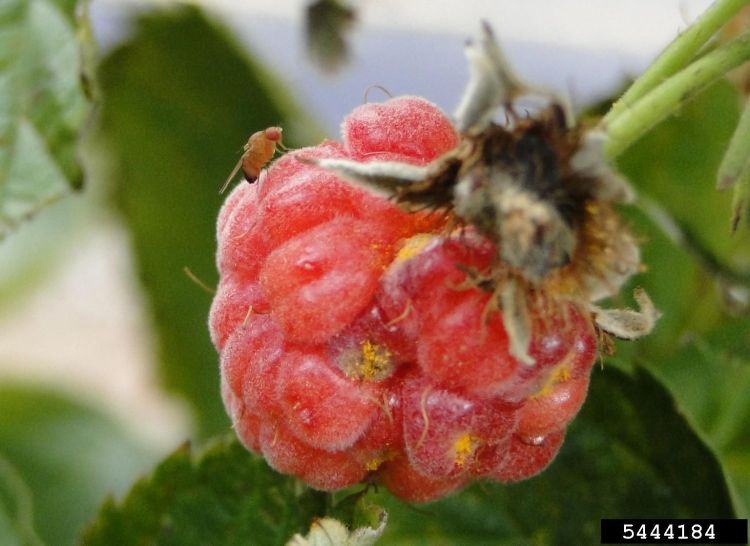
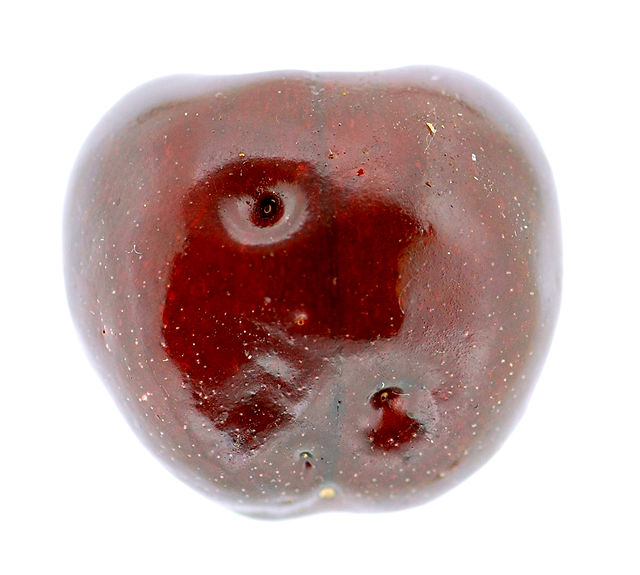


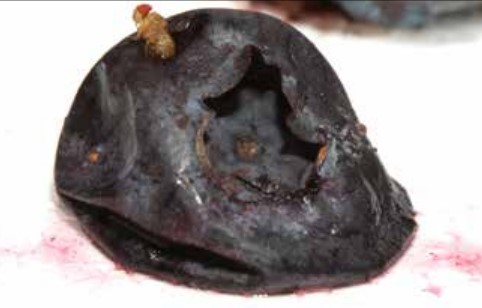
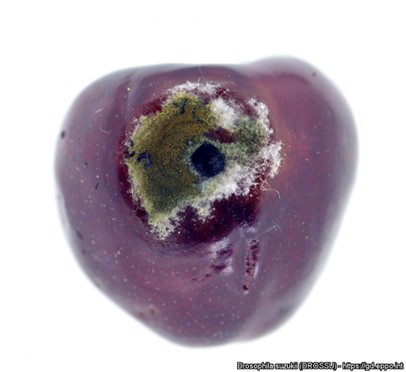
Pest profile
Appearance
- Adults: Measure between 2–4 mm long with a wingspan of 6–8 mm. Males typically smaller than females (Figure 1). They have prominent red eyes and are yellowish-brown with dark horizontal stripes on their abdomen. Only males have the single dark spot at the tips of their wings. Females possess a serrated ovipositor which slices through the fruit skin allowing them to insert eggs inside.
- Eggs: Pale, translucent milky white, oval shaped and around 0.6 mm in length. They have two distinct strands at one end (Figure 8).
- Larvae: Creamy white maggots, which grow up to 4 mm long (Figure 4).
- Pupae: Oval shaped, around 3 mm long, 1 mm wide and creamy coloured becoming tan-brown as they age. They have a pair of distinct finger-like projections at one end which act as breathing tubes (Figure 5).
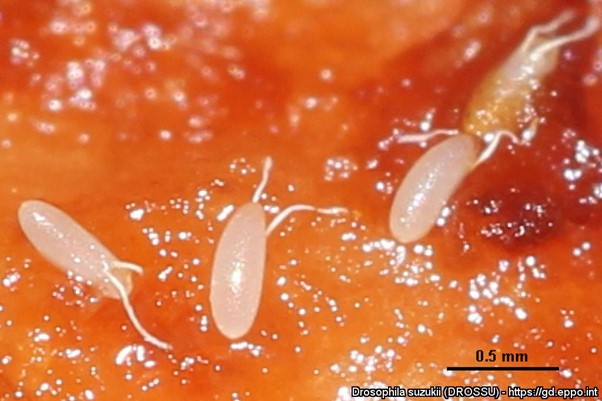
Host plants in Australia
- Primarily thin-skinned fruit including berries (blueberry, raspberry, blackberry, boysenberry, strawberry, loganberry, cranberry), stone fruit (cherry, nectarine, peach, apricot, plum, prune) and grapes.
- If the skin of hard fruits is already broken the females can lay eggs into fruit. Kiwi fruit, persimmon, loquat, fig, tomato, apple and pear are affected.
Life cycle
- Adults emerge in early spring and can start mating and laying eggs within a week.
- Females lay a clutch of 1-3 eggs per insertion and up 300-400 eggs during her life span.
- The larvae develop inside the fruit and undergo three growth stages (instars)
- Larvae commonly remain in the fruit to pupate or pupation may occur in the soil
- The life cycle can be completed in as little as 10 days at 25ºC but takes 21-25 days at 15ºC.
- Late hatching generations can overwinter and emerge again in the spring extending their life span to up to 300 days.
Distribution and dispersal
- Considered native to southern and eastern Asia it is now widespread throughout the Asian continent.
- The pest has since spread to Russia, North America, South America, Europe, Africa and French Polynesia.
- Spotted wing drosophila can fly short distances and is dispersed naturally by wind over short and long distances.
- Over long distances the main pathway for movement is trade of infested fruit.
Prevention
- Monitor imported host plants and fruit carefully to prevent the spread of the pest.
Image credits
Figure 1. Nicolas Gompel. University of Bonn, CC BY 4.0
Figures 2 & 4. Hannah Burrack, North Carolina State University, Bugwood.org.
Figures 3 & 7. Dr Martin Hauser, California Department of Food and Agriculture, Sacramento, USA.
Figure 5. G. Seljak, Agricultural and Forestry Chamber of Slovenia.
Figure 6. Matteo Maspero and Andrea Tantardini, Centro MiRT - Fondazione Minoprio, Italy.
Figure 8. EPPO Global Database. https://gd.eppo.int
Reporting an unusual plant pest or disease
Report any unusual plant pest or disease immediately using our online reporting form or by calling the Exotic Plant Pest Hotline on 1 800 084 881. Early reporting increases the chance of effective control and eradication.
Please take good quality photos of the pests or damage to include in your report where possible, as this is essential for rapid pest and disease diagnosis and response.
Your report will be responded to by an experienced staff member who may seek more information about the detection and explain next steps.
Report now